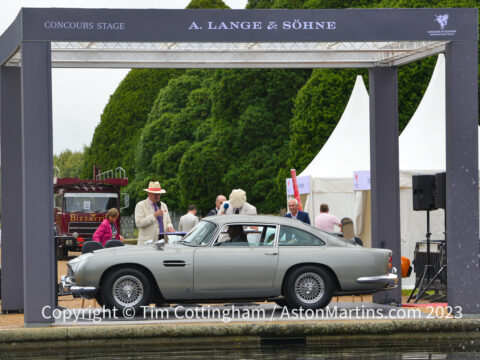Pre War Era
- 14/08/2012The very first car, ‘Coal Scuttle’, was registered in 1915, a second car was not finished until 1920 after the Great War had ended. Initially, AM built successful race cars in the 1500cc light car category but despite their success on the track, production and sales were slow and Bamford & Martin went into receivership in 1925. During this time, only 61 cars were built of which 25 are known to have survived to present day.
A new era began in 1926 when the new company of Aston Martin Motors Ltd. was incorporated with A.C. (Bert) Bertelli and Bill Renwick as directors. Considered as the father of Aston Martin, Domenico Augustus Cesare Bertelli took the company through turbulent times with various financial backers. Outstanding and exclusive cars were produced such as the International, Le Mans and the Ulster and the company shared many successes on the Race Track with the 1½ litre cars including at the 24 hours of Le Mans.
Soon after a new 2 litre car was introduced in 1937, A.C. Bertelli left the company. The 2 litre was intended to be a little less sporty, a little more mainstream to attract a greater range of discerning customers. The various 2 litre models blossomed into a very successful range of cars despite to uncertainty in the years which led up to the start of World War 2.
During the war years a revolutionary four door saloon was developed called the Atom. It looked very odd from the outside but had many features that were incorporated into the post war Feltham cars in production right up until 1959.
The inter-war years were turbulent for the small company producing small and wonderfully engineered lightweight sports cars with a high price tag. During this time, only around 680 cars were built, many of which still survive; a testament to their fine design and engineering integrity.
Most visitors to this website never visit this section which is a shame as the pre-war cars are very interesting indeed. I think many are put off by difficulties in identifying the many different models, a significant number have been re-bodied and that there are so few of each type. Indeed, without using the AMHT Register of Cars, I would find it difficult too. Previous AMOC registrars have made classification of pre-war cars just a little easier by breaking the 1.5 litre cars into four distinct subsections
- Bamford & Martin Cars, circular ‘AM’ badge
- 1st Series Bertelli – separate gearbox and worm drive rear axle. Chromed ‘feather’ badge
- 2nd Series Bertelli – used more bought in components, slight ‘V’ shape to the grille. Enamelled wing badge introduced.
- 3rd Series Bertelli – vertical thermostatically controlled radiator shutters (not Ulster of course)
If you are considering the purchase of a Pre-War Aston Martin or need servicing, restoration or parts, then I can highly recommend the website of Ecurie Bertelli.















